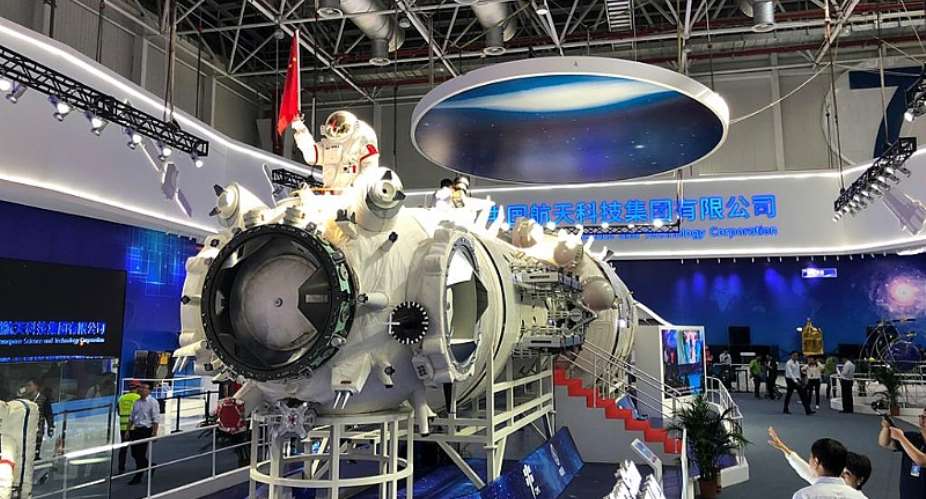Beijing is aiming to create a “Space Economic Zone” by 2050, which may generate US$10 trillion worth of services per year. Ideas for this ambitious program were launched during the 40th anniversary of China's aerospace industry. But other space powers aren't sitting idly by...
The “economic space zone” will take form in the “near-earth space” which includes the moon, acording to a report on a recent front page of the Science & Technology Daily.
China's leading scientific daily reported on 1 November that China would complete “basic research and make a breakthrough on key technologies before 2030,” leading to the successful establishment of an “earth-moon economic zone” by 2050.
According to the state-controlled Global Times, activities would consist of “conducting experiments on the moon” and developing the “space travel industry,” and transport, the latest element fitting in China's massive, but as yet earth-only, Belt and Road Initiative.
The report doesn't give any details as to how quoted "insiders" think the program is expected to "generate 10 trillion USD per year," but points out that in May 2018, Beijing launched a relay satellite to set up a communications link between the Earth and China's Tiangong II Space Station. The Chang'e-4 lunar probe then made the first-ever soft landing on the far side of the moon in January.
China's current ambitions to reach the stars where born as a result of the US-USSR space race in the 1960s and 70s. In the 1990s the “921” Space program was launched, resulting in manned space flights and the Tiangong space station program aimed at completing a space unit comparable to the International Space Station.
“Freedom loving nations”
China's ambitions have stirred dormant American plans to conquer space and it is far from sure if Washington wants to cooperate with the Chinese when it comes to the final frontier.
During a speech inaugurating the weeklong 70th International Astronautical Congress that was held in Washington late last month, US Vice President Mike Pence repeated seven times that the US wanted to work with "freedom-loving nations."
"I think there's lots of room on the Moon, and we need all our international partners to go with us to the Moon," NASA administrator Jim Bridenstine told reporters at the held in Washington.
Already in 2011, US Congress has explicitly prohibited Nasa to engage in agreements with China.
Currently the Americans are developing a spacecraft (Orion) and a mini space station (Gateway) that will remain in lunar orbit, which will in theory be used for the Artemis 3 crewed mission slated for 2024.
For its part, Japan also wants to take advantage of the new US program to write a new chapter in its own history.
"It's a very simple question to me because the Japan Aerospace eXploratin Agency would like to send Japanese astronauts to the surface of the Moon," said Hiroshi Yamakawa, president of the Japan Aerospace Exploration Agency.
The building of the ISS in the late 1990s and 2000s appeared to usher in a new era of space cooperation between the US and Russia following the Cold War, but this time around, Washington is in no mood to work with geopolitical rivals.





 Meta releases new version of conversational AI across its platforms
Meta releases new version of conversational AI across its platforms
 Cape Town named Africa’s Best Airport 2024 by Skytrax
Cape Town named Africa’s Best Airport 2024 by Skytrax
 Bono East: Four injured after hearse transporting corpse crashes into a truck
Bono East: Four injured after hearse transporting corpse crashes into a truck
 ‘Be courageous, find your voice to defend our democracy’ — Sam Jonah urges journ...
‘Be courageous, find your voice to defend our democracy’ — Sam Jonah urges journ...
 Exodus of doctors, nurses and teachers have worsened because of unserious Akufo-...
Exodus of doctors, nurses and teachers have worsened because of unserious Akufo-...
 2024 election: Avoid insults, cutting down people in search of power – National ...
2024 election: Avoid insults, cutting down people in search of power – National ...
 ‘You passed through the back door but congratulations’ — Atubiga on Prof Jane Na...
‘You passed through the back door but congratulations’ — Atubiga on Prof Jane Na...
 Government’s $21.1 billion added to the stock of public debt has been spent judi...
Government’s $21.1 billion added to the stock of public debt has been spent judi...
 Akufo-Addo will soon relocate Mahama’s Ridge Hospital to Kumasi for recommission...
Akufo-Addo will soon relocate Mahama’s Ridge Hospital to Kumasi for recommission...
 We must not compromise on our defence of national interest; this is the time to ...
We must not compromise on our defence of national interest; this is the time to ...
